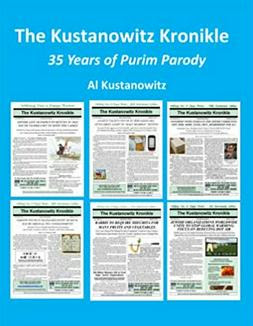The year was 1951, and a Hebrew song made its way up the Billboard list of top hits to #2. No, it wasn't Hava Nagila. It was Tzena, Tzena, as recorded by The Weavers, with Pete Seeger.
This week Ari Y. Kelman went beyond the list of the best 100 Jewish songs of all time that he and Jodi Rosen published last month in Tablet magazine, and zeroed in on the fascinating story behind the success of Tzena, Tzena.
The full article is worth reading, and we're giving you the link to it here.
As Kelman, a professor of American studies at the University of California, writes in Tablet,
In 1951, American Jews heard something they never heard before and have not heard since: a Hebrew song at No. 2 on the Billboard charts. The song, Issachar Miron’s Tzena Tzena, had been recorded the year before by the Weavers, a politically leftist folk singing group from Greenwich Village with hyperactive accents and closer ties to Woody Guthrie than to Golda Meir. Adopted by Pete Seeger as a folk song, the Weavers’ version of Tzena Tzena fed American Jews’ sense of what Israel was—a land brimming with tanned and muscular kibbutznik-soldiers singing, dancing the hora, and making the desert bloom.
Along with “Hava Nagila,” “Tzena Tzena” became one of the first Hebrew songs to be embraced widely by American Jewish audiences. But unlike “Hava Nagila,” which rang with overtones of religion and hasidism, “Tzena Tzena” lyrically evoked the sounds, sights, and soldiers of the new State of Israel, with its pastoral yet vigorous lyrics about girls going out to meet soldiers in the new settlements. In the early 1950s, Israel in the minds of Americans was some combination of the Garden of Eden and the little engine that could. It was dreamily socialist and seemed to hum with the vigor and romance of manual labor, filled with Jewish men and women who could fight and plant and love. The image of Israel in the minds of American Jews happily excluded the realities of malarial swamps and massive, hastily erected tent settlements to house the tens of thousands of Mizrahi Jews.
In the following few decades, the song was covered by everyone from Vic Damone and Mantovani to Richard Tucker, Chubby Checker, Judy Garland, and Dusty Springfield, among countless lesser-known artists like the Temple Israel Senior Youth Group Choir and the performers of Songs NFTY Sings II. In truth, it is probably one of the most recorded and best-known Jewish songs in the world.
“Tzena Tzena” is important not only for its popularity, but for how it became so popular in the first place. With its romantic depiction of young women lusting after righteous male soldiers, the song fulfilled the expectations of Israel held by many American Jews in 1951. Yet, this image needed a Harvard-educated American folk singer to reach an American audience. Despite the song’s pedigree, it took Seeger’s “hechsher” to make Israel audible to American Jews.
Here's the original performance by Pete Seeger and The Weavers, followed by a funny version that we discovered, sung by Arlo Guthrie, the folksinger/storyteller who gave us Alice's Restaurant. In this tongue-in-cheek version, Guthrie presents the song as an Irish ballad about boys named Tzena meeting girls named Alna. We hope you enjoy both versions.
















I'm making a documentary about Hava Nagila called Hava Nagila: What Is It? You can see a ten-minute clip at www.havanagilamovie.com. Everyone who donates $18 or more gets a credit on the film.
ReplyDeleteRoberta Grossman